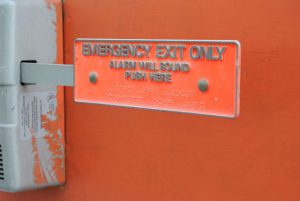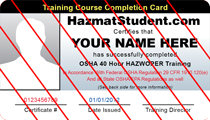| Make Your Move | Preparing an Evacuation Plan |
At some point in your life, you may be faced with a situation where you need to evacuate a building or area. It may happen at work, home, on vacation, or any other location. Although it’s difficult to plan for the unknown, planning is necessary to ensure you minimize the risks of injury to yourself and loved ones.
Emergency Action Plans (EAP), for emergencies that could happen at either the workplace or at home, are a critical piece of preparing for an emergency. OSHA requires employers to have an Emergency Action Plan (EAP) under OSHA Standard 29 CFR 1910.38. If you are not aware of the

details of your company’s EAP, ask for training to ensure you know what actions to take during a workplace emergency.If no plan is in place, discuss the importance of an emergency plan with your supervisor and ensure a plan is created. OSHA’s Evacuation Plans and Procedures eTool provides valuable information and resources to help with EAP implementation and compliance.
OSHA’s EAP requirements can be used to assist with your personal emergency planning as well. Consider the following when planning for potential emergency evacuations:
- Evaluate the types of emergencies that might necessitate an evacuation and build a plan for each scenario.
- In the cases of chemical, biological or radiological contaminants, determine if it would be safer to shelter-in-place vs. evacuate.
- Incorporate into your planning the layout and structure of buildings you visit frequently.
- Define the procedures to use for reporting a fire or other emergency.
- Identify emergency escape routes and exits.
- Determine what emergency procedures need to be taken while evacuating, such as turning off appliances or gas.
- Ensure everyone is aware of the location of emergency equipment, as well as how to use it.
- Establish when it would be appropriate to try to fight a fire vs. evacuate the area.
- Assess the shelter options that may be available during an evacuation.
- Designate a meeting place after an evacuation.
- Make a plan for how you will account for family and loved ones.
- Ensure your loved ones are aware of your emergency plans and know their roles and responsibilities. Consider their suggestions to improve the plan.
- Hold practice drills and review your evacuation plans and first aid procedures at least annually.
OSHA’s free Evacuation Plans and Procedures eTool has great information to keep in mind when preparing for evacuations. Whether preparing for a work or home evacuation, having a well-communicated plan is the key to minimizing the potential for a negative outcome.



